| | BOOK FORMAT
Clth, 8.25 x 11.75 in. / 252 pgs / 115 color / 27 bw. PUBLISHING STATUS
Pub Date 8/22/2017
Out of print DISTRIBUTION
D.A.P. Exclusive
Catalog: FALL 2017 p. 79 PRODUCT DETAILS
ISBN 9783735603432 TRADE
List Price: $55.00 CAD $72.50 AVAILABILITY
Not available | TERRITORY
NA LA ME | | THE FALL 2025 ARTBOOK | D.A.P. CATALOG  | | Preview our FALL 2025 catalog, featuring more than 500 new books on art, photography, design, architecture, film, music and visual culture.
|
| | | Craft Becomes Modern: The Bauhaus in the MakingEdited by Regina Bittner, Renée Padt. Text by Gerda Breuer, T’ai Smith, Eva Forgacs, John Maciuika, Rafael Cardoso, Joseph Grima, Julia Bryan-Wilson, Martino Gamper, Sara Ouhadou.
 Amid all the hammering, planing, sawing and weaving, the workshops at the Bauhaus Dessau must have been quite loud and active spaces.Craft Becomes Modern: The Bauhaus in the Making looks at the Bauhaus from the perspective of this noisy activity—handcraft. No term was more fiercely disputed there. Although conceived as “laboratories for industry,” a great deal was still done by hand in the Dessau workshops. Workshops at the Bauhaus straddled the different priorities and practical realities at play, falling somewhere between factory and craft business, between free experimentation and industrial contract work. From this field of tension, the Bauhaus tried to define handcraft anew as a utopian pursuit that could coexist with industrial culture. The Bauhaus’ interest in industrialization has been thoroughly studied; the persistence of craft among its teachers and students much less so. Craft Becomes Modern surveys this aspect of the Bauhaus’ teaching and work, and puts it in historical context. And these debates are far from over—this volume includes contributions from a range of contemporary design theorists and practitioners, including Julia Bryan-Wilson, Martino Gamper, John Maciuika, Rafael Cardoso, Joseph Grima, Gerda Breuer, T’ai Smith, Eva Forgacs and Sara Ouhadou, offering new insights for understanding handcraft in the 21st century.
Featured image, of the metal workshop at the Bauhaus Dessau, c. 1928-29, is reproduced from 'Craft Becomes Modern: The Bauhaus in the Making.' |
| | | FROM THE BOOKExcerpt from “At Daggers Drawn with the Machine: Art, Craft, and Design in the Early Twentieth Century” by Rafael Cardoso
According to a widely circulated story—which is considered apocryphal but may even be true—Constantin Brancusi, Marcel Duchamp, and Fernand Léger visited the first Paris Air Show together in 1912. There, they came across an airplane propeller and were struck by the perfection of its form. Duchamp is famously supposed to have remarked that painting was finished because no painter could ever produce an object superior to that one. Over the ensuing decade or so, each of the three artists created works that have come to be interpreted as responses to the challenge implicit in that verdict. Not too long thereafter, Duchamp himself gave up painting and conceived the first readymades and objets trouvés. Léger went
on to produce at least two versions of Les Hélices (The Propellers, 1918), Cubist compositions that deconstruct manufactured form into planes of color and largely abstract shapes. Brancusi’s sculptural masterpiece Bird in Space (1923) captures the polished elegance of the propeller and even manages to evoke its potential for flight, as argued persuasively by Rosalind E. Krauss.
Apocryphal or not, the story is a useful parable insofar as it encapsulates major issues surrounding the relationship between art, craft, and design in the early twentieth century. The timing of its occurrence very nearly coincides with the achievement of the automated assembly line at the Ford Motor Company in 1913, a symbolic marker of mass production. How were artists, craftspeople, and designers supposed to deal with the coming of the so-called “machine age” and the much-touted obsolescence of handwork? The paths chosen by the three respective men point to different answers.
By acknowledging that the artist’s role was no longer about making things but about framing a concept and staging it as a situation, Duchamp invented an entirely new vision of art. In the process, he also conceded the point that machine-made objects can possess aesthetic value in their own right, no matter how abject their purpose (e.g., a urinal). In giving precedence to intellectual conception over manual execution, Duchamp’s position is not too far removed from that of the archetypical industrial designer—a professional who creates meaning through form by bridging the gap between ideas and the products of manufacture.
Léger’s response is an affirmation of art as critical discourse. The painting does not mimic the propeller or try to compete with it in terms of formal qualities, but uses representation as a means of analyzing the deeper meanings behind the object, as well as evoking an aesthetic response. This is the modern artist’s position, par excellence. Art is not a reflection or copy of mundane appearances, but an alternative reality of form and language that serves as counterpoint to the contradictions of society. Handwork (the artist’s labor) thus becomes a gestural expression of political consequence.
Brancusi’s solution is, perhaps, the one most closely aligned with the post-Renaissance ideal of the work of art as masterpiece. His reaction to the purported superiority of the propeller is to produce something even more beautiful and graceful, independently of its purpose in utilitarian terms. Through virtuosity of hand and physical exertion, Brancusi disingenuously demonstrates that, though painting may fall short of the propeller’s elegance, sculpture is up to the task. This demiurgic attitude is in line with centuries of workshop hubris. Handwork, here, is the empirical manifestation of creative genius.
These positions define a range of possible responses to the relationship between art, handwork, and machinery shortly before the First World War. In very crude terms, they could be categorized as mental, discursive, and bodily—categories that are, by no means, mutually exclusive. Rather, they are markers along a spectrum of possibilities existing between the two extremes of idolatry for the machine—rightly or wrongly associated with Constructivism, De Stijl, Purism, and L’Esprit Nouveau— and hatred of it, as evoked by Bernard Leach’s characterization of fanatical second- and third-generation heirs of the Arts and Crafts movement, “at daggers drawn with the machine.” In order to grasp fully how these positions combined in differing proportions to constitute modernist visions of art and craft, design and architecture, it is requisite to understand the origins of the hand versus machine debate. | FROM THE ARTBOOK BLOG CORY REYNOLDS | DATE 7/17/2017 “Since mechanical weaving today is not far enough advanced to provide all the possibilities offered by hand weaving, and because these possibilities are necessary for people to develop their creativity, we deal in particular with hand weaving,” Gunta Stözl wrote in 1927. “It is only by working on a handloom that one has enough room to play, to develop an idea from one experiment to the next, until there is enough clarity and specification about the model for it to be handed over to industry for mechanical production.” Stözl’s 1928 “Jacquard Wall Hanging ‘5 Chöre’” (5 Choirs) is reproduced from Craft Becomes Modern: The Bauhaus in the Making, a beautifully designed and super-informative new book from Kerber and the Bauhaus Dessau Foundation leading up to the Bauhaus’s centennial in 2019. continue to blogFROM THE ARTBOOK BLOG CORY REYNOLDS | DATE 7/16/2017 This 1928-29 photograph of the metal workshop at the Bauhaus Dessau is reproduced from Craft Becomes Modern: The Bauhaus in the Making. Regina Bittner writes, “Conceived as ‘laboratories for industry,’ the workshops were places for addressing urgent questions in modern society: between individual authorship and anonymized production, between head and hand work, visual and haptic knowledge, free experimentation and economic exploitation, and amateurship and expert knowledge. From this field of tension, the Bauhaus attempted to redefine craft as a utopia, but also in convergence and/or coexistence with industrial culture.” continue to blog | FORTHCOMING AND NEW: ART | 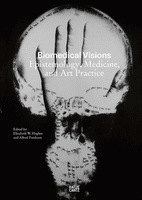 | Hatje CantzISBN: 9783775760850
USD $45.00 | CAD $68Pub Date: 1/6/2026
Active | In stock
|
|  | Mousse PublishingISBN: 9788867496846
USD $30.00 | CAD $45Pub Date: 1/20/2026
Forthcoming
|
| 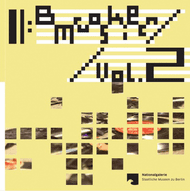 | Walther König, KölnISBN: 9783753306872
USD $69.95 | CAD $99.95Pub Date: 12/9/2025
Active | In stock
|
| 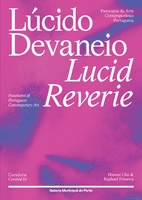 | Mousse PublishingISBN: 9788867496983
USD $20.00 | CAD $30Pub Date: 1/20/2026
Forthcoming
|
|  | SKIRAISBN: 9788857250465
USD $75.00 | CAD $110Pub Date: 12/9/2025
Active | In stock
|
| 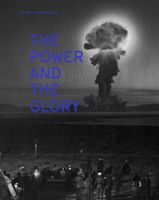 | HENI PublishingISBN: 9781911736202
USD $40.00 | CAD $60Pub Date: 1/27/2026
Forthcoming
|
| 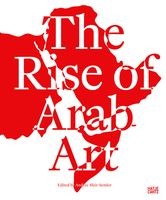 | Hatje CantzISBN: 9783775761116
USD $49.95 | CAD $74.95Pub Date: 11/4/2025
Active | Out of stock
|
| 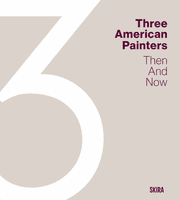 | SKIRAISBN: 9788857254180
USD $65.00 | CAD $97.5Pub Date: 12/9/2025
Active | In stock
|
| 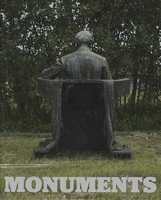 | DelMonico BooksISBN: 9781636810997
USD $75.00 | CAD $105 UK £ 60Pub Date: 3/31/2026
Forthcoming
|
|  | Kaph BooksISBN: 9786148035838
USD $35.00 | CAD $49Pub Date: 2/25/2025
Active | In stock
|
| 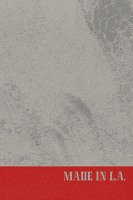 | DelMonico BooksISBN: 9781636811697
USD $39.95 | CAD $54.95 UK £ 32Pub Date: 11/4/2025
Active | In stock
|
|  | Éditions DilectaISBN: 9782373722215
USD $50.00 | CAD $70 UK £ 40Pub Date: 9/30/2025
Active | Out of stock
|
|
|
| |